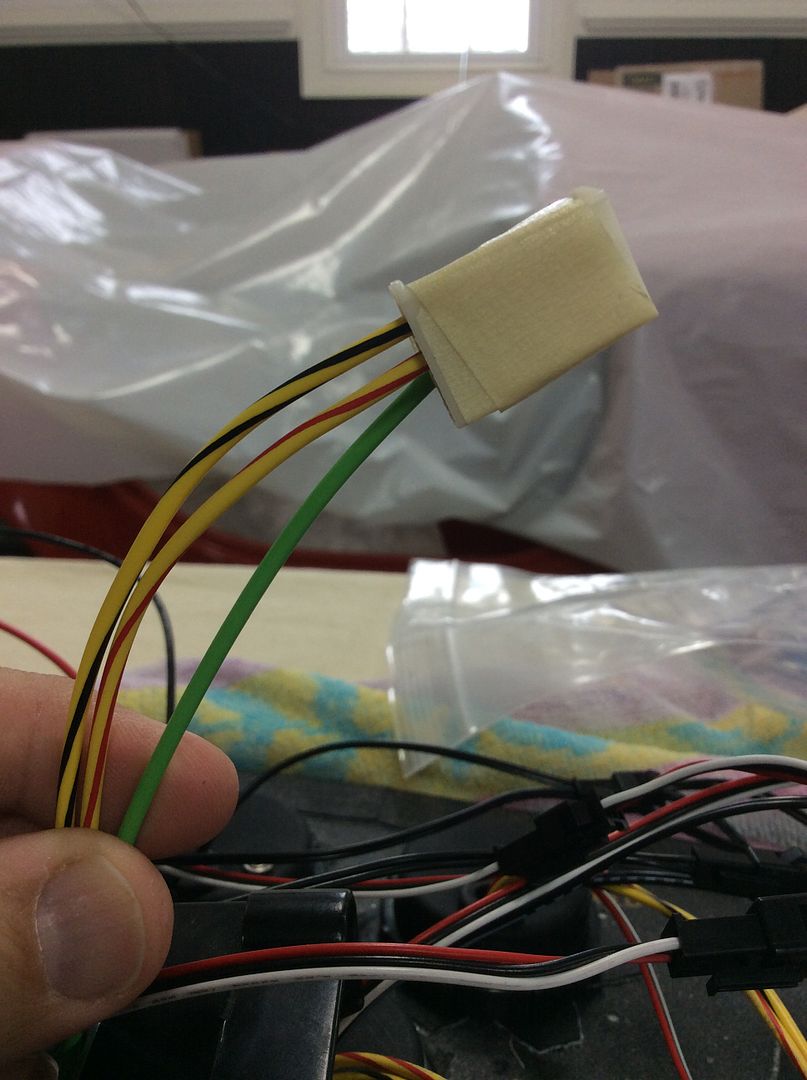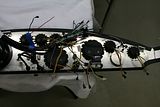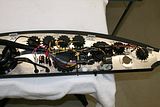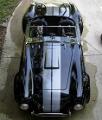Took on the task of wiring my dash this week and so far I think, think being the key work, that I am on the right track. So I would appreciate if yall could take a look at the pictures I am going to attach and let me know if you see anything wrong, or advice, and any tips going forward. I have the FFR vintage gauges with the RF harness. I am running a Forte 347 carb, no heat or air, Speedo, tach, oil pressure, H2O temp, fuel, Voltage and a clock. I am going to wire the manual switch for the fan but am considering the auto thermostat, I also have a switch for high beams, hazard and turn signals. Also, I didn't take a picture of it but the voltmeter gauge has the daisy chain and one other wire coming out the back but I do not see any wire on the RF harness that says Volts, will this run directly from the daisy chain or do I need to use something on the RF harness.
Thanks,
Chris
First picture is of daisy chain for the instruments, I used both daisy chains.
[IMG][/IMG]
Second pic of black daisy chain for dial lighting taped to a ground and a light wire off of the RF harness.
[IMG][/IMG]
third pic is of the red, white and black daisy taped to brown gauge feed, white light feed and ground.
[IMG][/IMG]
this pic is speedo wires, two from both the RF harness and the speedo gauge.
[IMG][/IMG]
purple tach wire from RF to Tach gauge wire
[IMG][/IMG]
I don't know who spelled this wire but its the Water Temp to Water temp gauge. Question is there are two wires that come off the gauge?
[IMG][/IMG]
Oil pressure, again two wires off of gauge and only one RF wire
[IMG][/IMG]
- Home
- Latest Posts!
- Forums
- Blogs
- Vendors
- Forms
-
Links

- Welcomes and Introductions
- Roadster
- Type 65 Coupe
- 33 Hot Rod
- GTM Supercar
- 818
- Challenge Series
- 289 USRCC
- Coyote R&D
- Ask a Factory Five Tech
- Tech Updates
- General Discussions
- Off Topic Discussions
- Eastern Region
- Central Region
- Mountain Region
- Pacific Region
- Canadian Discussions
- Want to buy
- For Sale
- Pay it forward
-
Gallery

- Wiki-Build-Tech



 Thanks:
Thanks:  Likes:
Likes: 


 Reply With Quote
Reply With Quote











